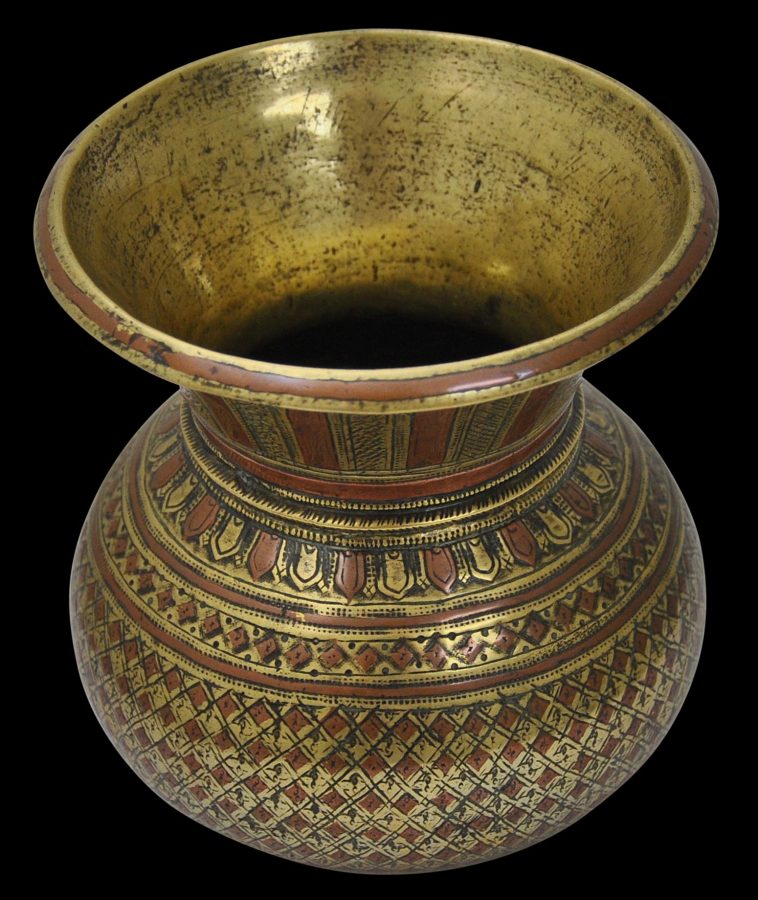This bulbous vessel was made to store lustral, holy water, perhaps from the Ganges. It is remarkable for the intricacy of its decoration which combines brass and copper to provide a pleasing contrast. It sits on a low foot, has a spherical base and a wide, flaring neck.
The neck and shoulder are engraved and inlaid with bands of lotus petals. The body is decorated all around with a diagonal chequer-board design. The bottom of the foot is engraved with a lotus motif. The repeated use of the lotus motif alludes to the function of vessel which is ritual in nature and linked to water.
This type of metalwork whereby copper and brass are used in the one item is known as ganga-jumna metalware. ‘Ganga’ refers to the River Ganges and ‘Jumna’ to the River Jumna (also called Yamuna). The Jumna is the longest tributary river of the Ganges in northern India. It travels a length of 1,376 kilometres (855 miles) before merging with the Ganges at Triveni Sangam, Allahabad, the site for the massive Kumbha Mela festival every twelve years. It is the longest river in India that does not directly flow into the sea.
The water of one has a slight yellow hue on account of he alluvial mud suspended in its waters, whilst that of the other has a reddish hue, and so in this vessel, the two rivers are represented by yellowish brass and reddish copper, with the combination ion the one vessel being symbolic of their merging and mixing at Triveni Sangam.
A vessel of similar form that combined copper and brass and which is attributed to the 17th century is illustrated in Zebrowski (1997, p. 208).
The vessel here has a superb patina and is in fine condition. It is sculptural, well proportioned, and particularly pleasing.
References
Harle J.C., and A. Topsfield, Indian Art in the Ashmolean Museum, Ashmolean Museum, 1987.
Zebrowski, M., Gold, Silver & Bronze from Mughal India, Alexandria Press, 1997.





